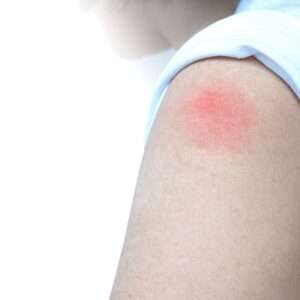Have you tried everything from medication to physical therapy with little success? Laser therapy in physiotherapy may be the solution you’ve been searching for! But wait, what about the Side Effects? Don’t worry; we’ve covered you with Damaging Side Effects Of Laser therapy
Laser therapy is a popular and non-invasive treatment used in physiotherapy to promote the healing of damaged tissues. It uses low-level lasers to deliver light energy to the cells in the affected area, which stimulates a range of biological processes that promote healing, such as increased circulation, reduced inflammation, and improved cellular metabolism. While Laser therapy can be an effective treatment option for a wide range of conditions, including pain, inflammation, and musculoskeletal injuries.
Damaging Side Effects Of Laser therapy may include mild redness or swelling, skin irritation, and temporary pain or discomfort. However, more severe Side Effects can occur, such as tissue damage or eye damage, although these are rare. Patients with darker skin or those exposed to sunlight may be more prone to experiencing Side Effects.
Read more: Along with Laser therapy In physiotherapy Side Effects read more The Best Laser Treatment In The Physiotherapy
Table of Contents
Common Laser Therapy In Physiotherapy Side Effects
Laser therapy is a popular modality in physiotherapy used to treat various musculoskeletal conditions.

- Mild pain or discomfort: Some patients may experience mild pain or discomfort during the Laser therapy session, mainly if the area being treated is already sensitive or inflamed. It usually subsides shortly after the treatment.
- Skin redness: Laser therapy can cause temporary skin redness in the treated area, which usually fades within a few hours of the session.
- Swelling: Swelling is another significant side effect of Laser therapy. It may occur in the treated area due to increased blood flow and inflammation, but it typically subsides within a day or two.
- Tingling or numbness: Some patients may experience tingling or numbness in the targeted area, which usually resolves within a few hours of the session.
- Headache: Laser therapy can occasionally cause mild headaches, mainly if used on the neck or head.
- Fatigue: Some patients may feel tired after a Laser therapy session, mainly if used to treat a larger area or multiple areas.
- Skin irritation: Laser therapy can cause skin irritation, such as redness, itching, or rash, in some people.
- Eye damage: Laser therapy can cause damage to the eyes if not used properly. It is why protective goggles should always be worn during the treatment to protect from adverse effects.
- Tissue damage: In rare cases, Laser therapy can cause tissue damage, such as burns or blisters, if the laser is used at too high of intensity or for too long. Ensuring the therapist is adequately trained and uses the appropriate settings for your treatment is vital.
- Interference with medical devices: Laser therapy can interfere with specific medical devices, such as pacemakers, so it’s essential to inform your therapist if you have any implanted devices.

Serious Laser Therapy In Physiotherapy Side Effects
Some of serious laser therapy side effects are:

- Eye damage: If the Laser therapy is directed towards the eyes or the patient does not wear proper eye protection, it can cause severe eye damage or blindness.
- Burns or tissue damage: If the Laser therapy is too intense or too long, it can cause burns or tissue damage. It can occur if the therapist is not trained correctly or the patient has sensitive skin.
- Skin discoloration: Laser therapy can cause skin discoloration, particularly in patients with darker skin tones.
- Infection: If the Laser therapy is not performed in a sterile environment or if proper hygiene protocols are not followed, it can increase the disease risk.
- Interference with medical devices: Laser therapy can interfere with specific medical devices, such as pacemakers, so it’s essential to inform your therapist if you have any implanted devices.

If you experience these Side Effects, seeking medical attention immediately is essential.
Summary
Laser therapy is a non-invasive treatment used in physiotherapy to stimulate healing in damaged tissues. Be aware of, including skin irritation, temporary pain or discomfort, and even eye damage in rare cases. Patients can minimize the risk of complications by choosing a qualified provider, following the recommended treatment plan, and reporting any unusual symptoms to their physiotherapist . By understanding the potential risks and precautions of Laser therapy in physiotherapy, patients can make informed decisions about their treatment options and achieve the best possible outcomes.
Frequently Asked Questions
Q: How does Laser therapy work?
Ans: Laser therapy delivers photons of light energy to the cells in the affected area. The cells absorb this energy and stimulate a series of biological processes that promote healing, including increased circulation, reduced inflammation, and improved cellular metabolism.
Q: What are Damaging Side Effects Of Laser therapy?
Ans: Laser therapy is generally considered safe and well-tolerated. However, as with any medical treatment, there are some risks and precautions to be aware of, including eye damage, burns or tissue damage, skin discolouration, and infection.
Q: What conditions can Laser therapy treat?
Ans: Laser therapy can treat various conditions, including arthritis, back pain, neck pain, carpal tunnel syndrome, tennis elbow, plantar fasciitis, and sports injuries.
Q: How long does a Laser therapy session take?
Ans: A Laser therapy session typically takes between 5 and 15 minutes, depending on the size and location of the treatment area.
Q: How many Laser therapy sessions are needed?
Ans: The number of Laser therapy sessions needed will depend on the individual’s condition and the severity of their symptoms. Typically, a course of treatment involves 6 to 12 sessions, spaced 2 to 3 times per week.
Q: What should I expect during a Laser therapy session?
Ans: During a Laser therapy session, the patient will lie or sit comfortably while the therapist places the laser over the treatment area. The laser will emit a low-level light for a specified period. The patient should not experience any pain or discomfort during the treatment.
Q: What are Laser therapy In physiotherapy Side Effects?
Ans: While Laser therapy is generally considered safe, some potential Side Effects include temporary redness or swelling, skin irritation, and temporary pain or discomfort.
Q: Can Laser therapy be used in conjunction with other treatments?
Ans: Laser therapy can be used with other physiotherapy treatments, such as exercise, manual therapy, and stretching. Depending on the individual’s condition, it may also be used with medication or other medical treatments.

One Response